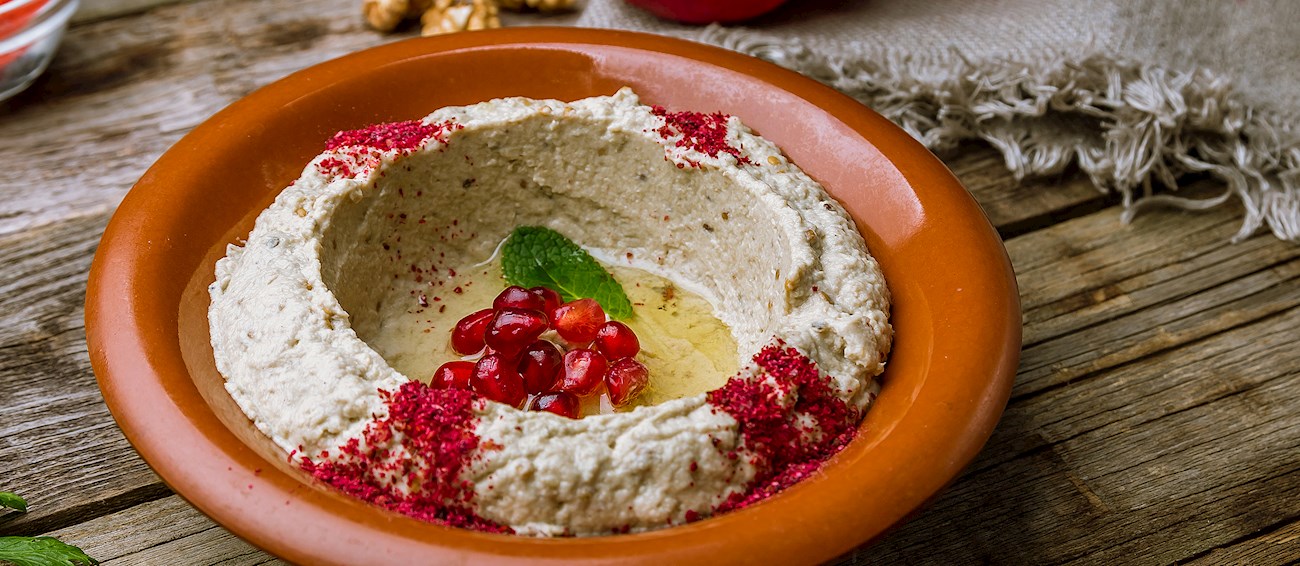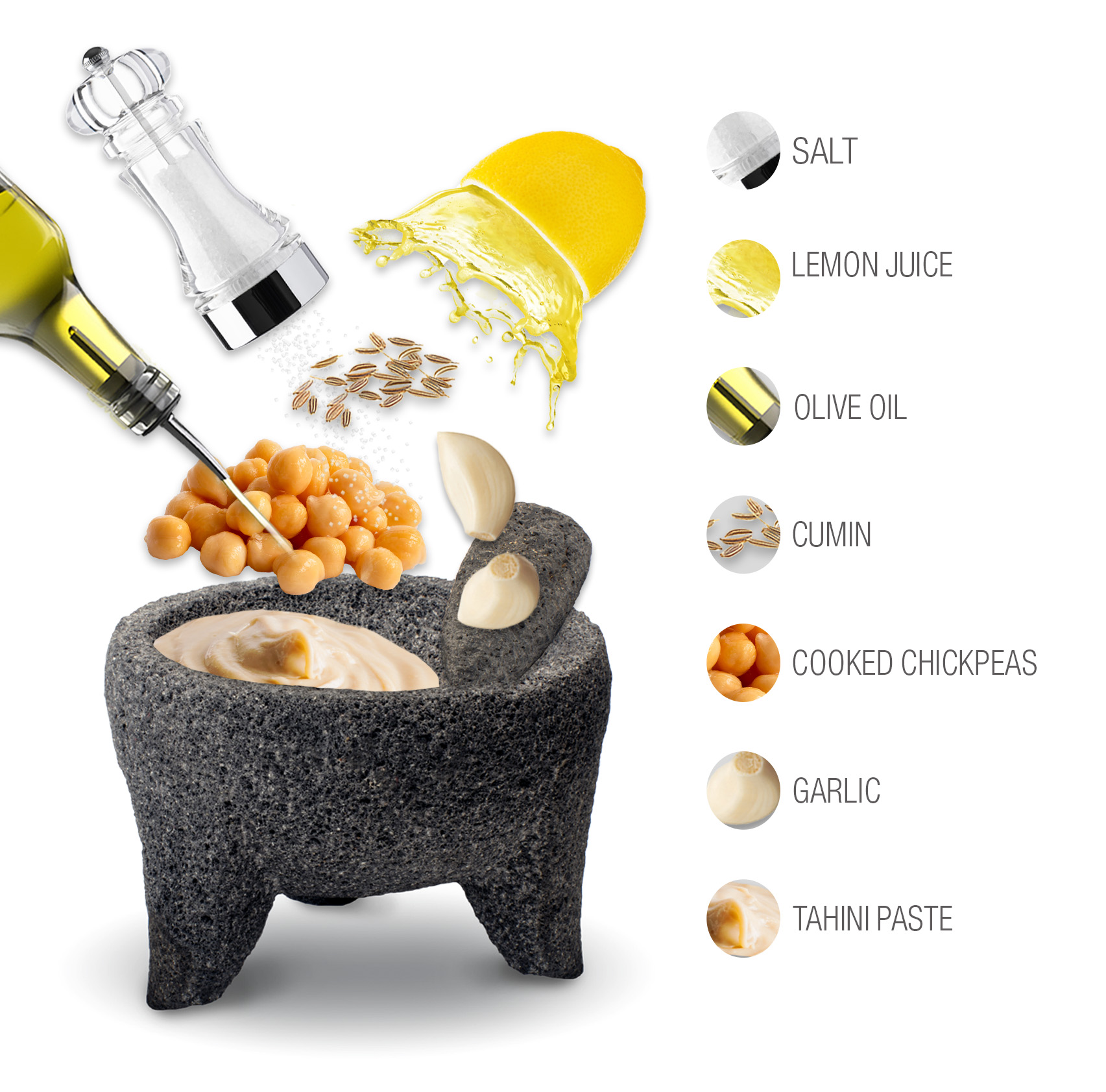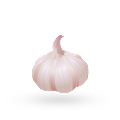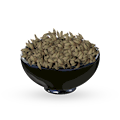MAIN INGREDIENTS
This internationally popular, beige-colored spread is traditionally made with mashed chickpeas, tahini sesame paste, lemon juice, and garlic. People across the world love hummus for its tangy flavor and the fact that it is filled with nutrients.
When served, it is typically dressed with a drizzle of olive oil, and is then used as a dip for vegetables or a flavorful filling for flatbreads such as pita. Even today, not much is known about its origins, although the earliest mention of hummus dates back to 13th-century Egypt.
VARIATIONS OF Hummus
MAIN INGREDIENTS
Mutabal is a Middle Eastern dip that's usually made with a combination of roasted eggplants, tahini, lemon juice, garlic, yogurt, olive oil, and salt. The ingredients are blended or mashed together until the dip develops a desired consistency, either smooth or a bit more coarse.
Once prepared, mutabal can be garnished with parsley, pomegranate seeds, or cilantro on top. If desired, onions can also be added to the mixture. It is recommended to serve mutabal as a part of a meze platter with pita bread on the side.
Pane e olio is an Italian phrase meaning bread and oil, referring to a simple yet classic Italian dish that highlights the quality of its basic ingredients: bread and olive oil. Traditional Italian bread such as ciabatta, focaccia, or a rustic country loaf is typically used, while extra virgin olive oil (EVOO) is the oil of choice due to its superior flavor and health benefits.
High-quality, cold-pressed olive oil from regions like Tuscany or Puglia is ideal. The bread is usually sliced and may be served fresh or lightly toasted, with toasting enhancing its texture and providing a warm base for the olive oil. The olive oil is typically poured into a small dish or bowl for dipping, though some variations may include a drizzle of olive oil directly on the bread slices.
Baba ghanoush is a Middle Eastern dish that's mostly associated with Lebanon (although it's origins are also connected to Syria and Jordan), and it consists of roasted and puréed eggplants, garlic, olive oil, lemon juice, and tahini, with the occasional addition of mint, onions, and various spices.
Its name comes from the Arabic phrase baba gannuj, where baba means father or daddy, and gannuj means pampered or spoiled, referring to a supposed invention of baba ghanoush by a member of a royal harem.
Kibbeh is a unique mixture of soaked bulgur wheat and other ingredients, typically lamb meat, and it is also considered the national dish of Lebanon and Syria. Fragrantly spiced and eaten as a snack for casual or celebratory meals, Kibbeh can be raw, baked, fried, stuffed, or prepared in a vegetarian version, stuffed with potatoes, pumpkins, and tomatoes.
It is typically served with mint leaves and drizzled with olive oil. The word kibbeh stems from an Arabic verb meaning to form into a ball or a circular shape. A fried variety of kibbeh, called kibbeh nabilseeyah is shaped into a ball, stuffed, then fried in oil.
VARIATIONS OF Kibbeh
MAIN INGREDIENTS
Even though these protein-packed chickpea fritters are listed as one of Israel's national dishes, and are a staple in many Middle Eastern countries including Palestine and Lebanon, it is often suggested that falafel might have evolved from the Egypt dish known as taameya. By the 1950s, to earn a living, Yemenite immigrants in Israel started making falafel in the streets, selling it wrapped in paper, which has eventually transformed this ancient dish into an early form of Israeli fast food and facilitet the global recognition of it.
As an alternative to the Israeli version, the Egyptian taameya uses fava beans instead of chickpeas, while the mixture is typically flavored with parsley, coriander, cumin, and onions. Today, both in Israel and other Middle Eastern countries, falafel fritters are most commonly enjoyed in pita or lafa flatbread sandwiches, topped with fresh or pickled vegetables, and coated either in hummus paste, tahini dip, or a zesty, garlic-flavored yogurt sauce.
Muhammara is a nutritious dip originating from the Syrian city of Aleppo. It is made with a combination of roasted red peppers, olive oil, and ground walnuts. The peppers give the dish a particular sweetness and smoky flavor, while ground walnuts make it texturally exciting.
Lemon juice, pomegranate molasses, garlic, and salt are often added to the dish. Traditionally, it was prepared in a mortar, but modern techniques usually mechanically blend the ingredients, so its texture might vary from grainy to smooth. It is usually served individually in small bowls or in larger plates, when it is consumed communally.
Creamy texture and mild flavor are the main attributes of labneh; a traditional Middle Eastern strained yogurt that is prepared with yogurt and salt. No strict guidelines are used to produce it; plain full-fat yogurt is mixed with salt and left to strain for twelve to twenty-four hours.
During straining, the yogurt whey separates, and what is left is a thick and firm cheese-like product. Its texture can vary from creamy to dense, but it always has a relatively mild and slightly salty flavor. The name labneh is native to the Middle East, but strained yogurt varieties are found in numerous other countries and regions such as Greece, Turkey, Cyprus, Central Asia, the United States, Mexico, and the United Kingdom.
MAIN INGREDIENTS
Fattah djaj is a Syrian dish made with a combination of chicken, rice, pita bread, a yogurt-based sauce, and a mix of nuts. All ingredients are typically tossed together in layers on a serving platter, creating an excellent blend of flavors and textures in one dish.
First there is a layer of crispy fried or toasted pieces of pita bread, then comes a layer of cooked rice, which is topped with chicken shreds, generously drizzled with yogurt sauce, and finally topped with toasted or fried nuts such as pistachios, almonds, or pine nuts.
Oil-cured eggplants are a staple throughout Levantine and Middle Eastern cuisine. The dish is traditionally prepared with small-sized baby eggplants that are shortly boiled and stuffed with a flavorful mixture of roasted red peppers, walnuts, garlic, and salt.
The eggplants are then cured in olive oil and are traditionally enjoyed for breakfast, usually accompanied by labneh, vegetables, and flatbread, but they also work as a standard meze dish or a snack. Though their origin is vague, preserved eggplants are strongly associated with Syria.
TasteAtlas food rankings are based on the ratings of the TasteAtlas audience, with a series of mechanisms that recognize real users and that ignore bot, nationalist or local patriotic ratings, and give additional value to the ratings of users that the system recognizes as knowledgeable. For the “Top 16 Syrian Appetizers” list until April 15, 2025, 10,489 ratings were recorded, of which 2,559 were recognized by the system as legitimate. TasteAtlas Rankings should not be seen as the final global conclusion about food. Their purpose is to promote excellent local foods, instill pride in traditional dishes, and arouse curiosity about dishes you haven’t tried.












